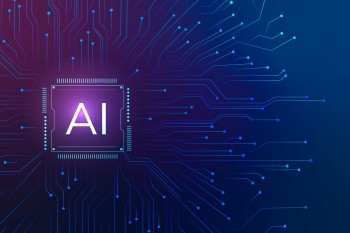The arrival of 5G connectivity has sparked immense excitement and anticipation for its potential to revolutionize communication, connectivity, and various industries. With lightning-fast speeds, minimal latency, and greater network capacity, 5G holds the promise of transforming the way we live, work, and interact with the world. Let's explore the pros, cons, and future implications of this groundbreaking technology.
Pros of 5G Connectivity:
Unprecedented Speed and Capacity: 5G boasts significantly faster speeds than its predecessors, allowing for quicker downloads, seamless streaming, and smoother browsing experiences. With its enhanced network capacity, 5G can accommodate a massive number of connected devices, supporting the growth of the Internet of Things (IoT) and enabling smart cities, autonomous vehicles, and more.
Low Latency and Real-Time Responsiveness: The minimal latency of 5G enables near-instantaneous communication between devices. This low latency is crucial for applications that require real-time responsiveness, such as remote surgery, autonomous vehicles, and augmented reality (AR)/virtual reality (VR) experiences.
Enhanced Mobile Experiences: With 5G, mobile users can enjoy immersive and high-quality multimedia experiences, including 4K video streaming, augmented reality applications, and multiplayer gaming without lag or buffering. This technology empowers content creators, developers, and users to explore new possibilities in mobile entertainment and productivity.
Transforming Industries: 5G connectivity has the potential to revolutionize various industries, including healthcare, manufacturing, transportation, and entertainment. It enables remote patient monitoring, telemedicine, predictive maintenance in factories, smart traffic management, and immersive virtual experiences, among many other applications.
Cons of 5G Connectivity:
Infrastructure Challenges: The implementation of 5G requires significant investments in infrastructure, including the installation of new base stations and small cell sites. Building this extensive network infrastructure may present challenges, including cost, accessibility, and regulatory considerations.
Coverage Limitations: Initially, the widespread availability of 5G coverage may be limited to urban areas and densely populated regions. Expanding coverage to rural and remote areas may take more time, as the infrastructure rollout requires careful planning and investment.
Compatibility and Device Upgrades: To experience the full benefits of 5G, users need compatible devices. Early on, the availability of 5G-enabled devices might be limited, and users may need to upgrade their existing devices to access 5G networks.
Spectrum and Interference: As 5G utilizes higher-frequency bands, there might be challenges with signal propagation, particularly through obstacles such as buildings and foliage. Moreover, the use of these high-frequency bands may result in potential interference concerns.
The Future of 5G Connectivity:
Looking ahead, the future of 5G connectivity is brimming with possibilities. As infrastructure expands and technology evolves, we can anticipate several significant advancements:
Innovation Ecosystem: 5G will foster an innovation ecosystem, giving rise to new business models, services, and applications. Startups, entrepreneurs, and established companies will leverage the capabilities of 5G to develop cutting-edge solutions that address various societal and industry challenges.
Smart Cities and IoT: With its capacity to handle massive amounts of data from interconnected devices, 5G will accelerate the development of smart cities. IoT applications, including smart transportation, energy management, and public safety, will become more prevalent, enhancing efficiency and quality of life.
Industrial Automation: 5G will drive the advancement of industrial automation, enabling real-time monitoring, control, and optimization of manufacturing processes. This technology will pave the way for the Fourth Industrial Revolution, improving productivity, quality, and safety in factories.
Edge Computing and AI Integration: To handle the vast amounts of data generated by 5G-connected devices, edge computing will play a vital role. Edge computing brings data processing closer to the source, reducing latency and enabling faster decision-making. Combined with artificial intelligence (AI) capabilities, edge computing will unlock innovative applications and personalized experiences.
In conclusion, 5G connectivity holds immense potential to transform communication, industries, and the way we interact with technology. While it brings unprecedented speed, capacity, and responsiveness, challenges such as infrastructure requirements and coverage limitations need to be addressed. As the technology continues to evolve, 5G will unlock new opportunities, enabling smart cities, revolutionizing industries, and ushering in a future where connectivity becomes seamless and ubiquitous.





